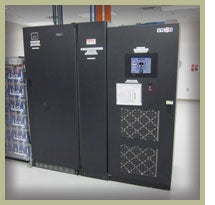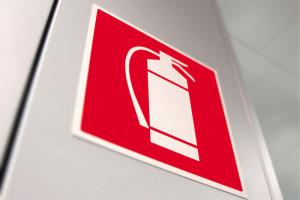Calculating efficiencies
 In the quest to incorporate energy efficient systems and technologies, hospital facility and information technologies (IT) managers need to consider the total cost of ownership (TCO). Important questions need to be asked such as: How will the new system improve operations? Does this technology help reduce costs in more than one area? Is constant upkeep and maintenance worth the cost and personnel resources?
In the quest to incorporate energy efficient systems and technologies, hospital facility and information technologies (IT) managers need to consider the total cost of ownership (TCO). Important questions need to be asked such as: How will the new system improve operations? Does this technology help reduce costs in more than one area? Is constant upkeep and maintenance worth the cost and personnel resources?
When organizations invest in technology, it makes sense to deploy the systems and equipment that will make a positive difference from an efficiency and cost-reduction standpoint. By focusing on the decision to reduce maintenance and TCO, Trinity Health, Novi, Mich., reduced operational costs and increased infrastructure reliability.
Trinity is one of the nation's largest Catholic health systems and an industry leader in electronic medical records (EMR). Trinity Health is devoted to its patients and strives for superior care, serving communities through a network of 49 acute-care hospitals, 401 outpatient facilities, 31 long-term care facilities, and numerous home health offices and hospice programs in 10 states. Trinity Health draws on today's technology in 30 data centers throughout the country to keep operations running smoothly.
Trinity practices extreme diligence in maintaining continuous operating power to health facilities because any issues within the IT infrastructure could interrupt clinicians' critical need for access to Trinity Health's EMR system. To protect against this situation, Trinity's data center facility management team works with local data center teams and local hospital engineering staffs to implement an infrastructure that is dependable, cost effective and sustainable, making sure this level of disruption does not occur.
Trinity Health Data Center Engineer, David Filas, LEED GA, explains how several, eco-friendly power-saving technologies have been deployed in data centers located in Iowa, Michigan, Maryland and California. "Our focus here protects data, power and service, as well as the environment," he says. "We have implemented advanced technologies from heating and cooling aisles to environmentally friendly power protection systems to air economization units and each technology not only reduced energy use and operating costs, but also retained utmost reliability within our data centers."
Cutting cooling concerns
 |
| Lexan panels delineate the cold aisle from the rest of a data center. |
In 2008, the American Society of Heating, Refrigerating and Air-Conditioning Engineers (ASHRAE) recommended that thermal requirements for server environments be as low as 65 degrees Fahrenheit and as high as 81 degrees Fahrenheit. However, more condensed and faster processors and the proliferation of stacked servers among other advances in the data center make cooling critical. Instead of blasting air conditioning through the entire data center to cool one section, Trinity Health's data center facility management team deployed cold air aisles in high-density areas to allow only specific hot spots to be cooled regularly instead of the entire room at the same level.
To deploy the cold air aisle technology, the data center facility management team performed a pilot test in one of Trinity Health's facilities. The cold aisle systems use partitions to keep air within special confines, aiding the areas that need cooling the most. The space routinely stays between 70 degrees Fahrenheit and 80 degree Fahrenheit, as recommended by ASHRAE.
Two years later, air containment has made a vast improvement in maintaining data center temperatures, providing maximum system stability and controlling energy costs. "It cuts down significantly on the amount of air conditioning required in the data center," says Filas. "We went from 10 AC units to seven and I believe we could even drop it to six."
The system also increases capacity. With a need for more computing power and ever-increasing storage of electronic medical records, high-tech imaging and other diagnostic systems, increased capacity is important, but comes at a price: more heat. Containing the heat reduces the need for additional cooling equipment and frees up data center space.
Increasing power protection
Typically in a data center, power protection comes in the form of a battery-based uninterruptible power supply (UPS). If there is a power outage or if the power coming in from the utility is unstable, the UPS will provide power from lead-acid batteries until the power comes back on or the generator comes online. Unfortunately, lead-acid batteries degrade every time they are used and one bad cell in the battery bank can take out the others. Besides requiring frequent maintenance, batteries take up a lot of valuable real estate, require expensive cooling and contain hazardous chemicals, making disposal an issue.
In reviewing backup power options, Trinity Health considered flywheels as a feasible option. Another form of power protection, a flywheel stores energy through rotation. The rotation is capable of generating enough energy to run a data center while backup generators activate. It's an environmentally friendly option that does not require cooling and the total cost of ownership is lower than battery-based UPSs. In addition, Trinity Health found that over a 20-year design lifespan, cost savings from a flywheel versus a five-minute valve regulated lead-acid battery bank are in the range of $100,000 to $200,000 per deployed flywheel.
 |
| A flywheel UPS at one of Trinity Health's data centers. |
Working with UPSs from 40 kilo Volt Amperes to 300 kilo Volt Amperes, Trinity Health's data center facility management team has retrofitted UPSs at eight Trinity Health hospitals and data center locations around the country with flywheels technology. The retrofit assures a high level of power protection while saving on expensive cooling and maintenance costs.
The flywheel systems use maintenance-free magnetic bearings and can be used in conjunction with battery-based UPSs or can completely replace them. Trinity Health has deployed both scenarios.
"It is our intention to slowly retrofit any existing battery systems with flywheels as the batteries come up for replacement, with the goal of going battery-free with future UPS systems," says Filas. "We are battery-free at our Maryland data center as it pertains to the centralized UPS systems; they protect the network closets at our hospital in Silver Spring."
From outside in
Sometimes the best technology is no technology at all. Another way to cool the data center is by embracing the easiest and least expensive way to do it – letting in outside air. For the past several years, large corporations have been building data centers in Iceland and other cool, northern locations just to take advantage of this free resource.
Trinity Health recently deployed outside air economization, pumping cool air into these windowless data centers via rooftop air handlers. Air handling units (AHUs) condition and circulate air as part of a heating, ventilating and air-conditioning (HVAC) system. In many instances this technology also controls the temperature and the humidity of the air.
A pilot project performed at Trinity Health's main data center using outside air for cooling was so successful that the data center facility management team chose to retrofit some of their existing data centers and use this technology exclusively in cooling its newest data center, built in Mason City, Iowa.
 |
| Rooftop air units pump cool outside air into a data center. |
The Mason City location uses two rooftop air handlers that connect to a ductwork ventilation system that distributes the conditioned air through the building and returns it to the AHUs. At Trinity Health's Ann Arbor, Mich., facility, two older computer room air conditioners were replaced with an air handler. Here, the air handler can use outside air plus utilize chilled water from the hospital's centralized system to cool the facility.
Benchmark calculations based on unit wattage show that the switch from air conditioning units alone to AHUs reduced Trinity Health's energy costs in the data center by 70 percent over one winter. At the Ann Arbor facility, wattage data showed that one AHU unit used fewer watts than six air conditioning units combined.
A holistic view
For Trinity Health, lowering costs in its data centers isn't just about making the mechanical-electrical infrastructure more efficient. Trinity Information Services believes a holistic view, one that includes looking at the IT equipment, is critical. Even as early as a few years ago, the IT staff would buy whatever was the lowest capital cost server. Now, facilities and IT managers work together to purchase servers that have a good price-to-performance ratio along with a strong emphasis on the energy saving features of the servers.
These energy initiatives have been very successful for Trinity Health. From backup power to air containment and optimization, they have reduced operational costs across the board in Trinity Health data centers and ensured the highest level of energy efficiencies while increasing system reliability.
Dann McKeraghan is vice president at Vycon. He can be reached at dann@vyconenergy.com.




